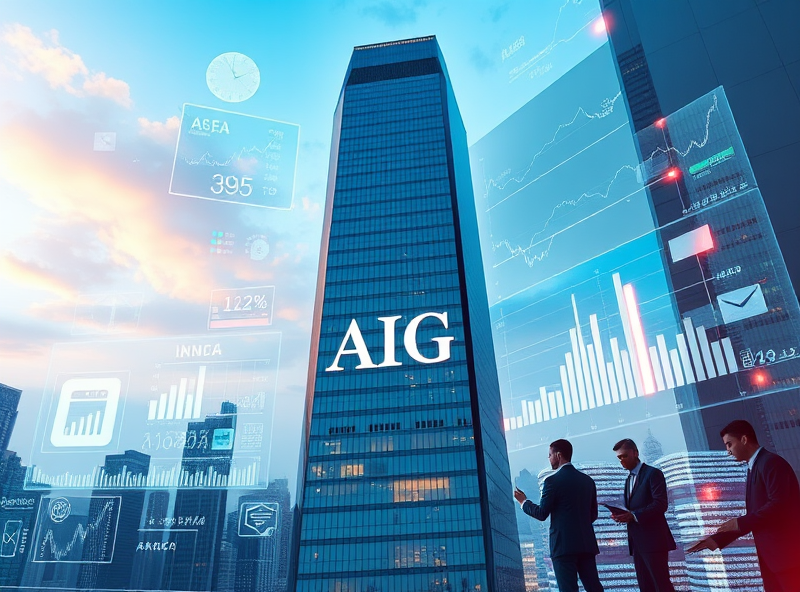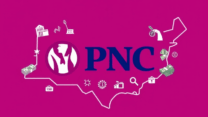
AIG Post-Crisis Evolution: Insurance Giant’s Financial and Strategic Growth Insights
Robust Q1 Financials Show AIG’s Earnings Momentum

American International Group (AIG) has made significant strides in its post-crisis transformation, and its Q1 2024 financial results are a clear reflection of that momentum. The company reported strong earnings, driven by disciplined underwriting, strategic divestitures, and continued focus on high-performing segments.
In the first quarter, AIG posted a net income of $1.2 billion, up from $800 million in the same period last year. This 50% increase underscores the effectiveness of its streamlined operations and improved risk management practices. A key contributor to this growth was the General Insurance segment, which saw a combined ratio improvement to 91.9%, reflecting better pricing discipline and lower catastrophe losses.
AIG’s life and retirement business also showed resilience, with increased assets under management and solid investment income. The company’s strategic focus on de-risking and capital efficiency has helped enhance shareholder value, as evidenced by a 10% increase in quarterly dividends and an ongoing share repurchase program.
For investors and policyholders alike, these results offer a reassuring signal of AIG’s financial health and long-term viability. The company’s strong capital position, with a total capital of over $60 billion, positions it well to navigate market volatility and seize growth opportunities.
AIG’s progress is not just about numbers—it’s about restoring trust and building a sustainable future. As the company continues to invest in digital transformation and operational efficiency, stakeholders can expect even more robust performance in the quarters ahead.
For more detailed financial disclosures, you can visit AIG’s official investor relations page: https://www.aig.com/investor-relations
Streamlining Operations Through Efficiency and Tech Alliances

In the wake of the 2008 financial crisis, AIG has undergone a remarkable transformation, focusing not only on financial recovery but also on operational excellence. One of the key pillars of this evolution has been streamlining operations through enhanced efficiency and strategic technology partnerships. This approach has helped AIG reduce costs, improve customer service, and stay competitive in a rapidly changing insurance landscape.
AIG has embraced automation and digitalization across its business units. By implementing AI-driven claims processing and customer service chatbots, the company has significantly reduced turnaround times and operational bottlenecks. These tools not only improve internal workflows but also enhance the customer experience by providing faster and more accurate responses.
Moreover, AIG has formed alliances with leading tech firms to leverage cutting-edge technologies such as machine learning, data analytics, and cloud computing. These collaborations enable AIG to better assess risk, personalize insurance products, and improve underwriting accuracy. For example, through partnerships with cloud service providers, AIG has migrated critical infrastructure to the cloud, enhancing scalability and security.
Efficiency is also achieved through internal process optimization. AIG has adopted agile methodologies and lean management practices to foster a culture of continuous improvement. This has led to better resource allocation, reduced redundancies, and more responsive decision-making.
For individuals and businesses alike, AIG’s transformation offers a valuable lesson: embracing technology and efficiency is not just about cost-cutting—it’s about creating sustainable growth and delivering better value to customers. If you’re looking to improve your own operations, consider how digital tools and strategic partnerships could streamline your processes and boost performance.
For further reading on how technology is reshaping the insurance industry, you can refer to this McKinsey report: https://www.mckinsey.com/industries/financial-services/our-insights/insurance-2030-the-impact-of-ai-on-the-future-of-insurance
Debt Repayment and Credit Upgrades Indicate Financial Strength

In recent years, AIG has made remarkable strides in restoring its financial health, and the latest indicators are clear signs of its progress. One of the most telling signs of AIG’s post-crisis evolution is its consistent debt repayment strategy. By significantly reducing its long-term debt, AIG has not only improved its balance sheet but also signaled to investors and credit agencies that it is on a stable financial trajectory.
Credit rating agencies such as Moody’s and S&P have responded positively, upgrading AIG’s credit ratings. These upgrades are more than just symbolic—they reduce borrowing costs and increase investor confidence. A higher credit rating means AIG can access capital markets more efficiently, which is crucial for funding operations, underwriting insurance policies, and investing in future growth.
For policyholders and stakeholders, this financial strength translates into greater trust and reliability. A financially robust insurer is better positioned to pay claims promptly, invest in innovation, and weather economic downturns. It also reflects strong corporate governance and risk management practices, which are essential in today’s volatile global economy.
In essence, AIG’s debt reduction and improved credit standing are not just internal wins—they’re meaningful indicators of long-term sustainability and resilience. For anyone considering investment or insurance services, AIG’s financial trajectory offers a reassuring signal of strength and stability.
For more detailed financial data, you can refer to AIG’s official investor relations page: https://www.aig.com/investor-relations
Catastrophe Management and Global Insurance Leadership

In the wake of global climate change and increasingly frequent natural disasters, catastrophe management has become a cornerstone of modern insurance strategy. AIG, one of the world’s leading insurance companies, has taken a proactive role in redefining how the industry approaches risk, resilience, and recovery.
AIG’s post-crisis evolution has been marked by a robust commitment to advanced catastrophe modeling, strategic reinsurance partnerships, and digital transformation. By leveraging data analytics and predictive modeling, AIG is better equipped to assess risk exposure and prepare for large-scale events like hurricanes, wildfires, and earthquakes. This not only helps the company maintain financial stability but also ensures faster, more efficient support for policyholders during crises.
AIG has also emerged as a global leader by investing in climate risk research and supporting international frameworks such as the Task Force on Climate-related Financial Disclosures (TCFD). These efforts underscore the company’s dedication to transparency and long-term sustainability.
For individuals and businesses, AIG’s leadership in catastrophe management translates into more reliable coverage, better risk mitigation strategies, and greater peace of mind. Whether you’re a homeowner in a flood-prone area or a multinational corporation managing global assets, understanding how your insurer prepares for the unexpected is crucial.
To learn more about how AIG is addressing climate-related risks, you can visit the official TCFD site: https://www.fsb-tcfd.org/







